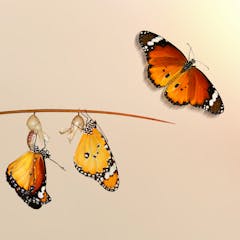
Articles on Evolution
Displaying 141 - 160 of 1000 articles

It’s hard to imagine the world without Homo sapiens. But it’s unlikely we would be here if it wasn’t for a chance asteroid collision.

Black corals provide critical habitat for many creatures that live in the dark, often barren, deep sea, and researchers are learning more about these rare corals with every dive.

Neanderthals were wiped out by chance changes in the environment. The rise of Homo sapiens wasn’t inevitable.

Only insects populations can compare to rising human numbers.

There is more to evolution than the genes species inherit.

Zinc in their bones reveal that these early humans were top of the food chain.

New genetic research shows humans’ famed ability to adapt our behaviour and develop new tools and techniques has not always been enough to survive when times have grown tough.

COVID-19 causes lung injury and lowers oxygen levels in patients because the SARS-CoV-2 virus attacks cells’ mitochondria. This attack is a throwback to a primitive war between viruses and bacteria.

In this week’s episode of The Conversation Weekly, we speak with three scientists who study the ways plants and animals evolve in a world dominated by humans.

Microbes are so tiny humans can’t see them without special equipment. But the discovery of 20 new species will help scientists map the evolutionary tree of life.

Bits of viral genes incorporated into human DNA have been linked to cancer, ALS and schizophrenia. But many of these genes may not be harmful, and could even protect against infectious disease.

We should not rule out taking a closer look at exoplanets that have a poorly oxygenated atmosphere.

Deep in the oceans dwell creatures that can evade many of the evolutionary drivers of life on land – and they remain seemingly unchanged through time.

Fossils of a giant killer mosasaur have been discovered, alongside the fossilised remains of its prey.

Climate change is exposing animals to temperatures outside of their normal limits – a new study has found that insects have a particularly weak ability to adjust.

Research on Chernobyl frogs has shown that the ionising radiation caused by the accident triggered a process of natural selection among these animals.

Narwhals, hummingbirds and the Asian sheepshead wrasse have opened scientists’ eyes to the complexity of nature.

The teeth of the tammar wallaby don’t grow in the way you’d expect – and scientists want to know why.

You may have heard science has reconsidered its view of Neanderthals but did you know human hybrid species played a key role in our evolution?

Not all human societies throughout history have been patriarchal.
